Gochujang
Though sesame oil has been the only condiment I keep in my kitchen, I finally decided to make it a collection and add Korean hot pepper paste (gochujang) to spice up my sometimes bland spaghetti sauce. It may seem like a small, insignificant purchase but I mulled it over for weeks before I stopped by the Korean market.
In the aisle of the grocery store I perused the labels on the numerous red pepper paste options comparing price per gram and ingredients. After careful consideration, I settled on a small tub of paste from a familiar brand that was the most economical in terms of cost and most importantly, did not contain MSG.
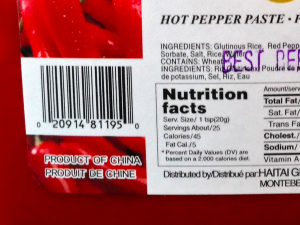
What’s the big deal?
I wasn’t always like this. Much of the discourse against buying Chinese or other foreign products was of the “be patriotic, buy American” variety, and I heard a lot of it when I was growing up in California. It did not seem applicable to me at the time as I did not identify with the white grandpa-type driving a Chevy with “Buy American” bumper stickers.
My fear of the “Made in China” brand became ingrained in me while I was visiting Korea for half a year during college. Living, shopping, and getting groceries with my aunts, it didn’t take long for me to pick up on the matter-of-fact understanding that buying any food item from China meant potential poisoning. I wondered though if some of it was not born out of a kind of conspiracy against South Korea’s northern and Sinocentric neighbor.
It didn’t take long for me to pick up on the matter-of-fact understanding that buying any food item from China meant potential poisoning.
Whatever the case, my family’s negative feelings around the “Product of China” label stuck with me and I still do my best to avoid any packaged edible product made in China, even though it’s usually the cheaper option.
I’ve even seen a Korean company label its food “Product of P.R.O.C.”—seemingly banking on naive consumers missing that P.R.O.C. stands for People’s Republic of China. I mean, why wouldn’t you just write China unless you were trying to avoid saying it?
The “Made in China” brand
The “Made in China” brand has acquired a bad reputation not only among Koreans and Korean Americans, but also among a wider pool of Americans, beyond food safety. We hear stories like the production for a New York City bridge being outsourced to China, where eight bridges had collapsed in the span of about a year since 2011, raising concerns about safety and the loss of jobs. We also get reports of working conditions such as “China’s Christmas Village” where migrant laborers work 12 hours a day covered in red dust to make our holiday decorations. A chilling play about migrant factory workers, The World of Extreme Happiness, just closed at New York City Center further highlighting issues related to the “Made in China” brand. Without even going into its fake luxury handbags, it’s plain that the brand of China has gained a reputation as spurious and at times unethical.
Just the three words can trigger an avalanche of emotions, feelings of moral obligation and concerns cultivated from a history of interacting with what has become a de facto national brand.
It’s surprising to me that so much information can be contained in just three simple words: “Made in China” or “Product of China.” It can trigger an avalanche of emotions, feelings of moral obligation and concerns cultivated from a history of interacting with what has become a de facto national brand. Like James has often pointed out (see I don’t need a brand. I need a product. or Is the museum brand god dead?) whatever distillation of memories and experiences that you have somehow kept in your mind—that is a brand, and the brand of China has amassed a number of strong associations for itself, keeping me from buying Chinese-manufactured goods, even though I’m sure I buy lots unwittingly.
So what?
I don’t know that China is looking to revamp its brand, but if they were, there would certainly be a tremendous amount of work ahead. They couldn’t simply rebrand themselves as safe and ethical, as we learned from BP’s green branding and the oil spill; it would require decades of building trust based on delivering on such a new brand promise, thus requiring a change of policies, legal structures, and even cultural norms for worker’s rights and safety—all on a sustained basis—before perceptions of the “Made in China” brand would really shift. This kind of brand transformation is difficult enough for a company, with say 10,000 employees—imagine how much more difficult for a country of more than a billion.
All of that said, I’m thinking now that it’s probably a good thing I don’t have a condiment rack—can you imagine how much mental effort it would take for me to put together anything more than my duo of gochujang and sesame oil? I have been thinking about the soy sauce bottle a bit though and I may be back next time with a post on that.
Do you need an affordable way to improve your brand today?
Because we know that not everyone needs or can afford our full process, we created a guided tutorial package for our foundational brand strategy tool: the Brand Pyramid. Watch the video for a preview.
For more information on the brand strategy tutorial, visit here where you will find a fuller explanation and link to a free download of the first video.
Photos by the author


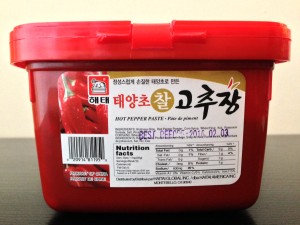
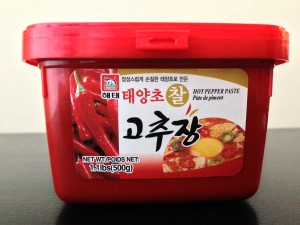
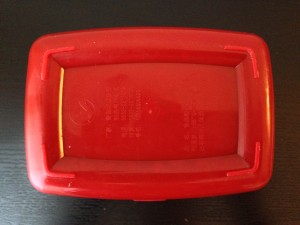
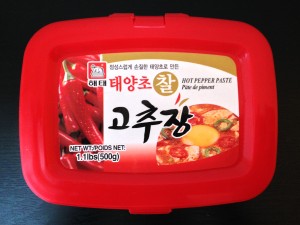

Ask for help.
We are kind, thorough and ready when you are. You just need to ask.